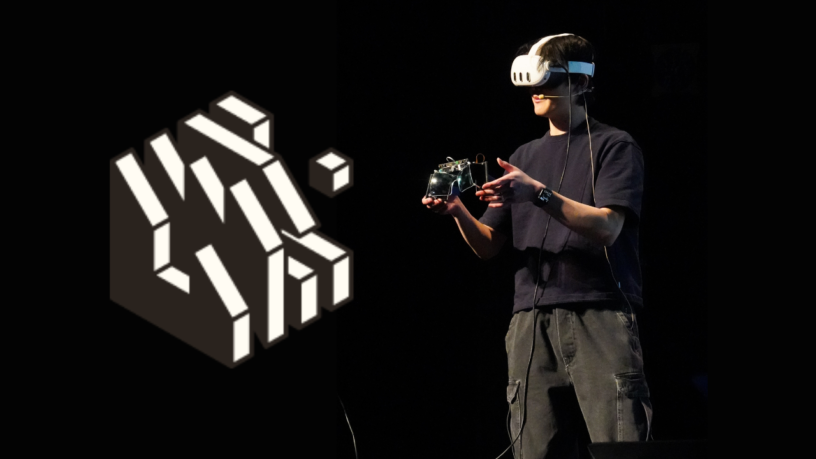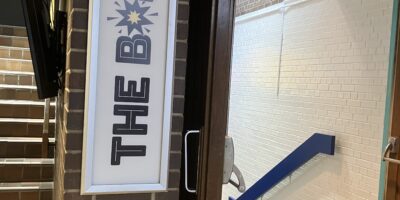UW Reality Labs is the brand new design team open to UWaterloo students! More specifically, it is a student design team that specializes in extended reality (XR) and spatial computing. Led by 1B Systems Design Engineering student, Kenny Na, 2B Software Engineering student, Justin Lin, and 1B Software Engineering student, Vincent Xie, the club is continuing to grow, with many students coming from computer science as well as various engineering programs.
I had the opportunity to interview Kenny, who is also the product lead for the team, in order to learn more about the projects and opportunities that the UW Reality Labs provide.
Where did this team start out from?/What projects are you working on?
Kenny began this idea of a team back in the Fall of 2023 where he was trying to develop a unique hardware project with a few other people. They decided they wanted to try developing virtual reality (VR) lenses. Eventually, this led to an idea of immersing more into the world of VR.
He said, “Within the VR industry, there are many VR headsets. And initially, we built just another VR headset. And so the idea for the next VR headset was ‘Can we extend the capabilities and go beyond consumer products and explore what hasn’t been explored yet?’”
There are three main projects that the team is focusing on this term. The first includes Reality From Scratch, which aims to ultimately create a fully-custom VR headset, built with an inertial measurement unit (IMU) and microcontroller unit (MCU) that can collect real-time motion vector data. The final headset is expected to track 6 degrees of freedom (rotation and position).
Furthermore, the next project is the Wide FOV Prototype, which involves stitching 2 rectangular 4K displays together and utilizing Fresnel panels, which are a type of compact lens that are meant to be a substitute for the curved surfaces of a conventional lens. Both of these are used in order to completely extend the field of view on both sides of the eyes. Based on the team’s research, most VR headsets have portrait displays where the horizontal field of view is maximized up to only 100 degrees, which is limiting in comparison to the 180 degrees field of view most people have with their regular, complete vision. The hope is that the Fresnel panels and the larger displays (now being in a landscape position) could extend the field of view delivered to the user.
Finally, there is the Universal Gestures project, which is an integrated Unity package that aims to provide advanced hand gesture recognition and context-aware gesture interactions. This will be created by training a machine learning model using the float values of the Meta’s SDK (software development kit) that represent the flexion of fingers on the hand.
What are your long term goals for the term?
According to Kenny, he mentioned there were many factors that could be looked at in the future, which includes the vergence-accommodation conflict, a phenomenon which he took the time to describe.
“When I focus my eyes on an object at a certain distance away, do the lenses of the VR headset accommodate for that correctly? The lenses, or “optical stack” on all consumer VR headsets today are fixed at a certain distance, oftentimes 2m as determined by UX researchers – and so in a virtual environment, if I look at something that is 20 centimeters away from my eyes, the lenses can’t accommodate for that. So the focus of my eyes don’t match the focus of the lenses, and that’s a large issue for both user comfort and image clarity.”
He hopes that this feature can be implemented by the team in a future project soon.
On top of trying to use vergence-accommodation, he also wanted to look into potentially finding new ways to create more comfort for the user. Na said, “How can we make the headset feel like it’s not even there? Headsets right now are like a 1kg brick on your face. That really takes you out of the experience.”
Most importantly, there is a collective understanding amongst the entire group that the world of VR is only growing. “It’s still so young, and trying to push further, you’ll quickly find yourself at the edge of industry and academia. It’s only been around since 2011”, said Kenny. They are aware they have a lot of room to grow over not only this term, but in future terms. Hopefully, they will be able to expand the field of VR through the UW Reality Labs.
To learn more about the club and the projects they are working on, feel free to check out their Github page (https://github.com/uwrealitylabs) and check out their Discord channel (https://discord.gg/Uv7We55DrX) and Instagram page (@uwrealitylabs).





Leave a Reply